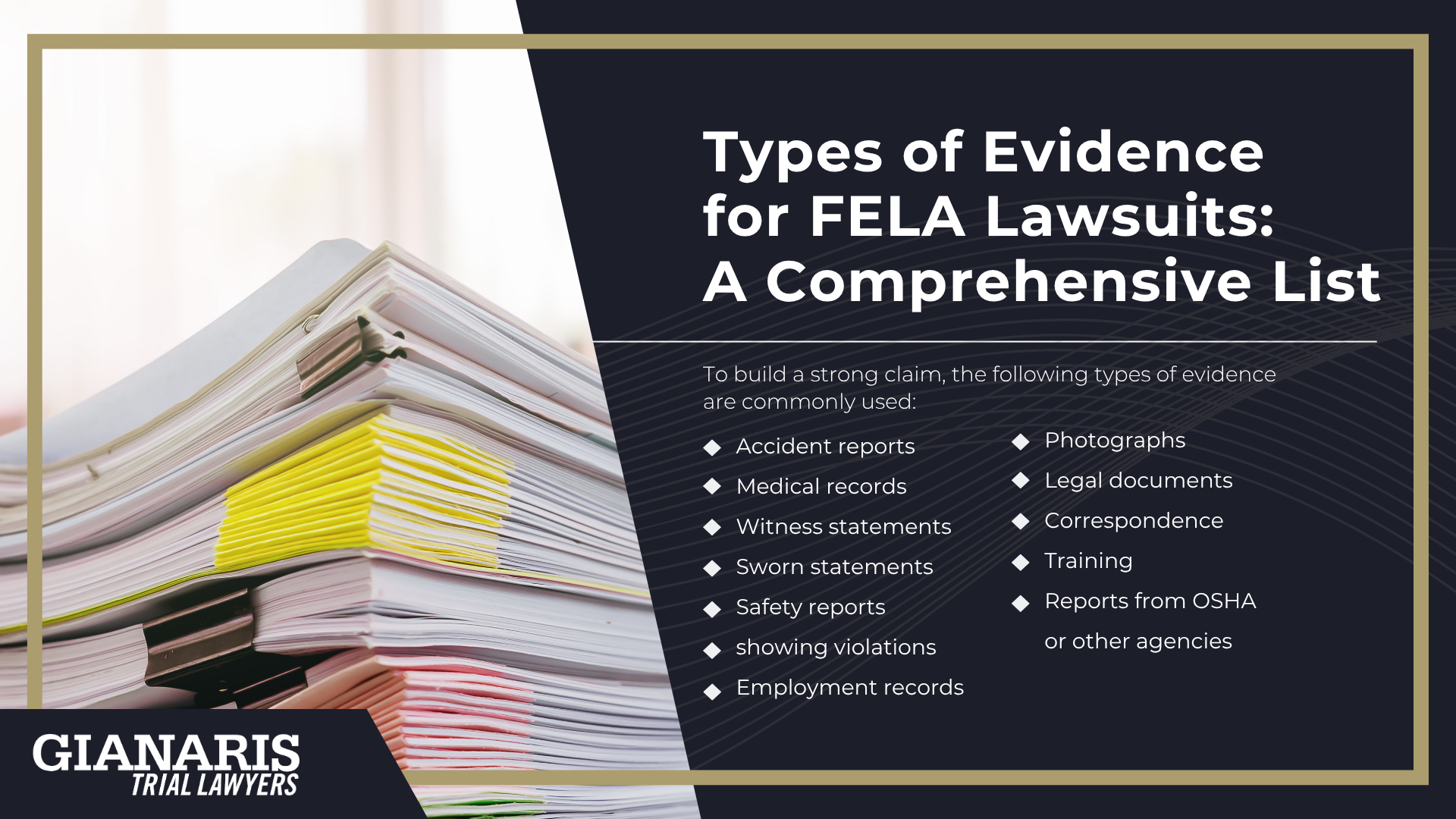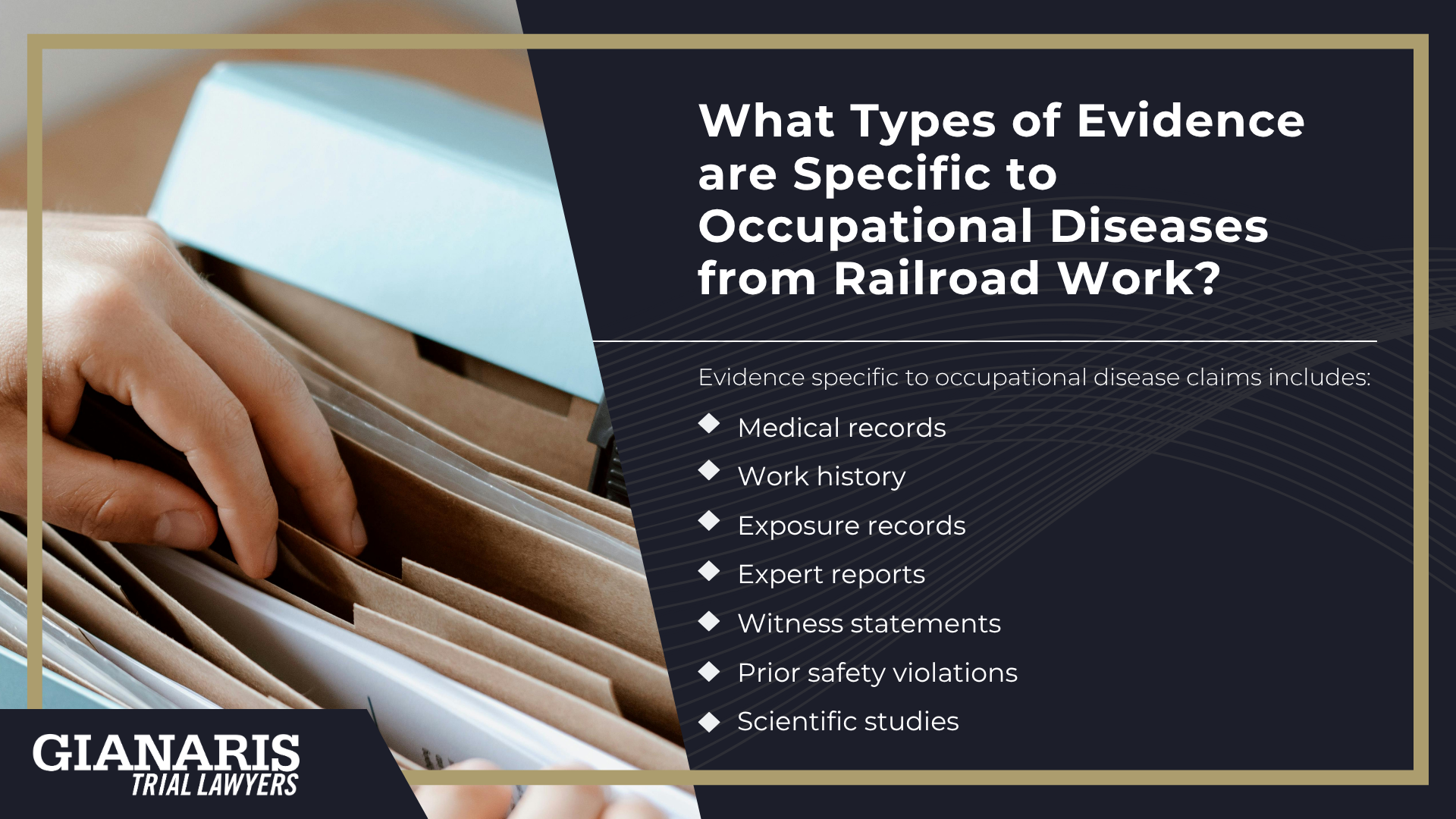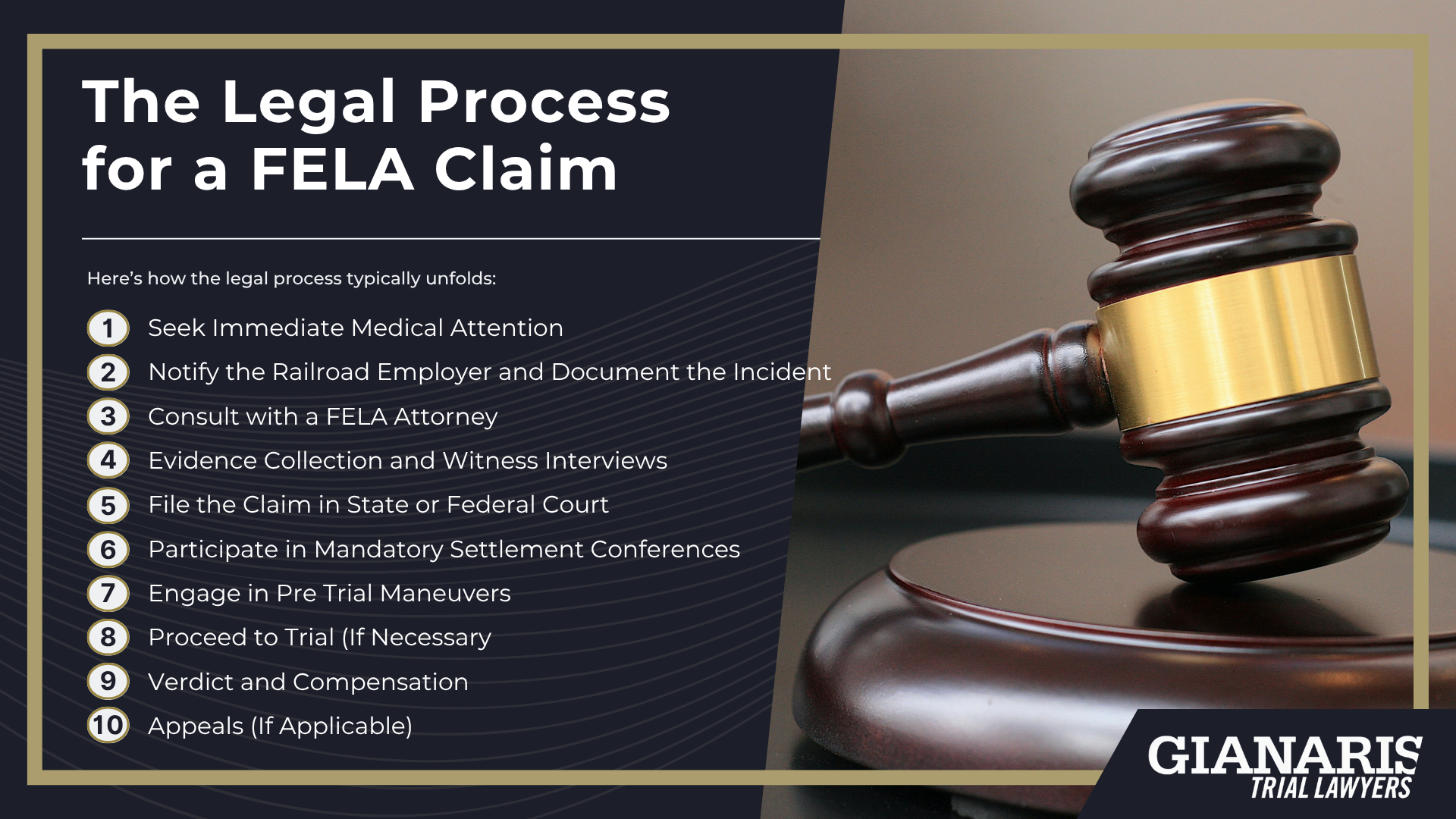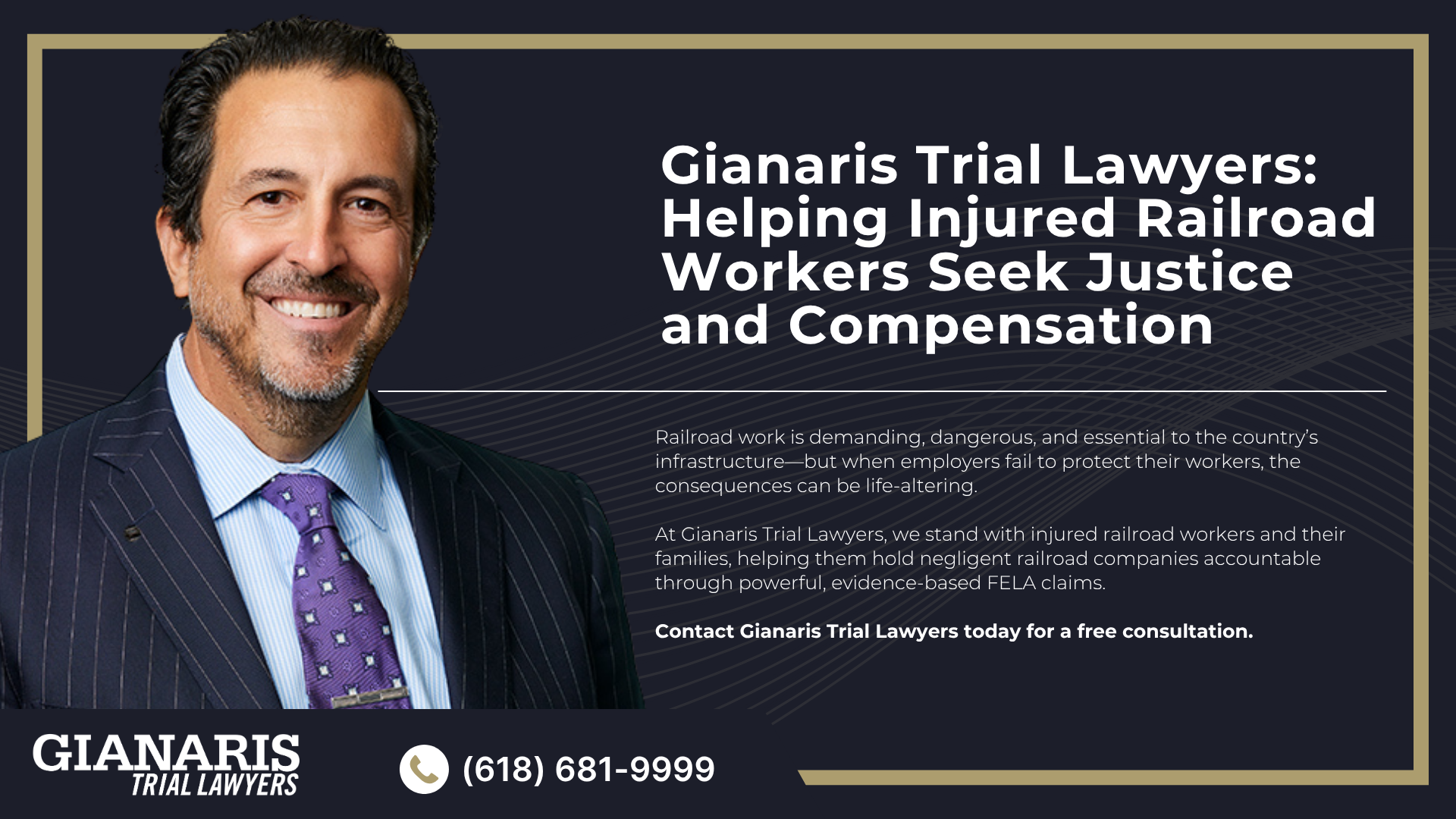Unlike typical workers compensation claims, lawsuits under the Federal Employers Liability Act (FELA) require proof that the railroad employer was negligent and that this negligence contributed to the injury.
For injured workers in the railroad industry, this means gathering a wide range of documentation to support their case.
FELA claims are not no-fault—there must be concrete evidence demonstrating a failure to follow a safety regulation, maintain equipment, or protect the worker from foreseeable harm.
The success of a FELA lawsuit often hinges on the quality and depth of the evidence presented, which must establish both the occurrence of the on-the-job injury and the railroad employer’s role in causing it.

To build a strong claim, the following types of evidence are commonly used:
- Accident reports completed by the railroad employer or supervisor
- Medical records showing the diagnosis, treatment, and long-term prognosis of the injury
- Witness statements from coworkers or others who observed the incident or unsafe conditions
- Sworn statements or depositions from the injured worker and other parties involved
- Safety reports showing violations, maintenance failures, or prior complaints
- Employment records documenting job duties, schedule, and history with the company
- Photographs or videos of the accident scene, unsafe machinery, or resulting injuries
- Legal documents from internal investigations, regulatory bodies, or previous claims
- Correspondence between the injured worker and the railroad company about the injury
- Training records that show whether the employee was adequately instructed for the task
- Reports from OSHA or other agencies detailing safety violations or inspection failures
This collection of materials forms the foundation of the claims process and helps FELA attorneys prove that the railroad injury was more than just an accident—it was the result of employer negligence.
Because multiple parties are often involved in railroad operations, identifying who was responsible for the unsafe condition is vital.
Evidence like prior complaints or regulatory violations may demonstrate a pattern of disregard for safety.
These documents also serve to counter the railroad’s defense and may uncover other responsible entities.
Injured workers should begin collecting materials as soon as possible, even if they plan to hire legal counsel later.
The legal team will then use this information to construct a clear timeline, link the injury to workplace conditions, and validate the amount of claim compensation sought.
FELA cases can involve extensive litigation, and having detailed, credible documentation often influences whether a case settles or proceeds to trial.
Evidence that clearly ties the on-the-job injury to employer conduct can mean the difference between a denied claim and full recovery.
How Can Gianaris Trial Lawyers Help Retain and Present Evidence for My Railroad Injury Case?
When a FELA claim begins, having the right legal team in place is critical to preserving key evidence before it disappears or is manipulated by the railroad company.
At Gianaris Trial Lawyers, we work closely with injured employees to immediately launch our own investigation into the cause of the railroad injury.
Our experienced FELA lawyers know what types of documentation carry the most weight in court, from maintenance records to eyewitness accounts and safety violations.

We collect, organize, and present this evidence with strategic precision to demonstrate the railroad employer’s negligence.
Because FELA cases require the injured worker to prove fault, our legal expertise in managing technical details and timelines often leads to stronger claims and higher compensation.
We also protect clients from tactics used by railroad companies or the railroad claim agent to downplay or discredit injuries.
From start to finish, Gianaris Trial Lawyers builds your case on facts, credibility, and an aggressive approach to uncovering the truth.








